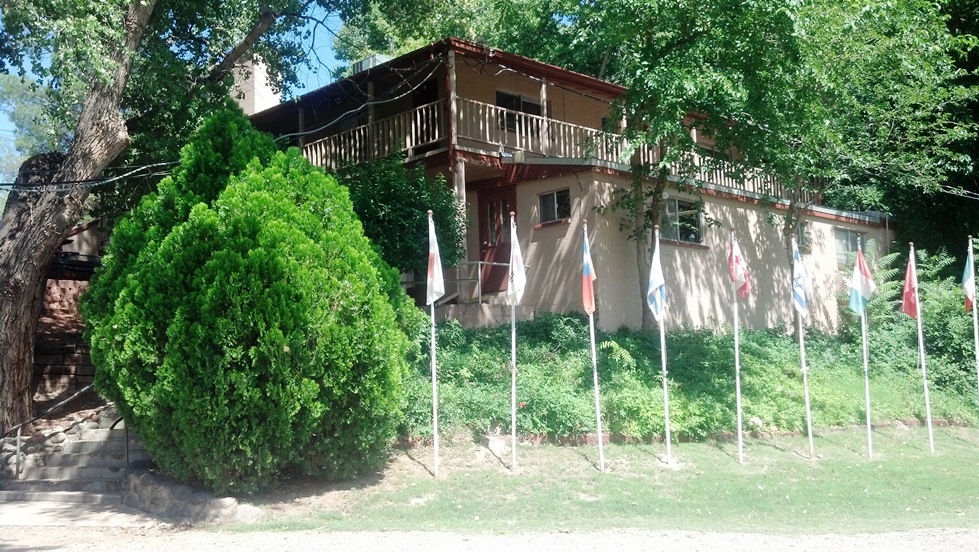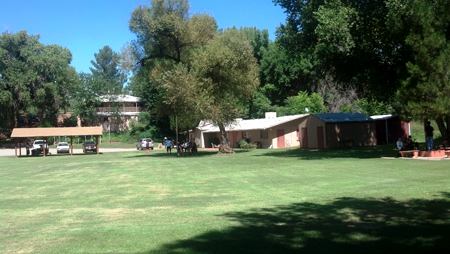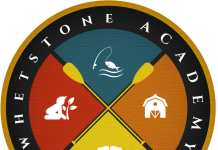West Sedona, AZ
David Wick Jr.
Headmaster and Admissions
928-634-5571
Visit By:
Lon Woodbury, MA, IECA, CEP, September 6, 2012
When James Herrera called me with an invitation to come down to visit Oak Creek Ranch School, I expressed how dubious I was and the reasons. Independent Educational Consultants had written Oak Creek Ranch School off years ago because they had developed the reputation of taking in kids needing therapeutics and very tight structure without the capability of meeting their needs. James explained that the staff was very aware of that reputation and the school had been taken over by new management, David Wick Jr., who has spent the last few years turning it around. This intrigued me and I decided I needed to visit to see for myself if there were any changes. In short, what I saw was an entirely different school than the one I had visited several years ago.

When he arrived about nine years ago, David first determined that a third of the students were not reachable by the school, and within a three-month period he sent them home. These students needed more highly clinical programs or intense residential treatment than Oak Creek Ranch could offer. Some even needed serious drug and alcohol recovery treatment. Removing those very negative influences was the first step in creating a school that worked.
Then, over time, David refocused the coed school to enroll those who were failing, in school or most anywhere else for that matter. He saw these students primarily needed nurturing, consistent structure, and the sense of accomplishment that comes from success. Along with that, admissions were tightened to better screen out those who were not compatible with the new mission. He also let some staff go who were unable to adjust to the change in the school philosophy, and looked for experienced staff who were compatible with the new direction.
With these decisions, the school’s character began to change. An important key to getting the staff onboard with the new mission was his hiring Jim Graves as Dean of Residential Life three and a half years ago who had a solid reputation from St. Paul’s school in Phoenix. Jim has become an anchor in the school and has been invaluable in the implementation of the new school mission. As Assistant Director, he is responsible for all operations regarding the students during the absence of Headmaster Wick. Their typical student now is defined as ADD/ADHD students, or perhaps those rather “quirky” teens who were having trouble fitting in back home, or were discouraged.
Approaching the school is a memorable experience. A few miles from Sedona you leave the pavement for a dirt road across a landscape of sand and sagebrush. After passing a couple of lonely ranch houses, going down into a ravine and crossing a stream with flash flood warnings prominently posted, you arrive at an oasis of trees, lawns and buildings which is the school. The sense of a cozy tucked in isolation is strong.

After meeting the staff and being briefed on the history and current mission of the school, it was lunchtime and I was connected with about a half dozen students to talk with while we were having lunch. One of the students had been asked to join me, but the others volunteered to tag along and meet the “visitor” also. All of them were open about their experience, seemed to be enjoying themselves at the school and were quite positive about the school. To me, one girl’s story stood out. She had been floundering back home and her parents had enrolled her there hoping it would help her get her life back on track. What impressed me was she had been there only three days and already had a “best friend,” talked about how she felt she was a part of a big family and was excited about the upcoming school year. Although the school has open enrollment, most students arrive just before the start of the Fall Semester of classes.
Their arrival is scheduled for just before “Orientation” which is organized so that as soon as a student arrives they are involved in various activities and fun things to do that gives all the students the chance to meet each other, the staff and get an idea of expectations. For the new student especially, this avoids the “lonely in a crowd” feeling when arriving at a new place, and gives the new school year a great start. I had arrived during the “afterglow” of Orientation and its effectiveness and feeling of safety was apparent.
The school does have a therapist on-call, but that is pretty much the extent of their clinical focus. They have a strict anti-drug policy and for the few students that need it, there are Narcotics Anonymous meetings available on campus. The program is more an emotional growth school, with a solid structure and an emphasis on being firm, fair, and consistent. They start with an attitude of trusting the kids and telling them they believe in them. With this population, the staff say the students respond well to this and with the staff support given the students, most of the time the students do the right thing. It was reported to me they also respond well to being given responsibilities. The students I talked with seemed to have a sense of ownership, in that this was their school, so their approach seems to be working.
Their primary function of course is as an academic school. They have a large campus with buildings spread around a quad somewhat bigger than a football field. The administration building, cafeteria and many classrooms were on a side of a hill, and the other side of the campus is bounded by a river. Dedicated classroom buildings were scattered all around the quad, with the horses and stables at one end. In my tour of the classrooms, I was impressed at indications of innovative academics. For example, the English classroom had a periodic table of literature, and another with the periodic table of poets – intriguing concepts. The library had an array of world maps, each demonstrating a different technique in solving the problem of mapping the world. That was the first time I had seen in one place all the various attempts to accurately map on a flat surface a three dimensional world.

The existence of creative innovation in the classroom was specifically encouraged as became very clear after a discussion with the principle Nadine O’Brien. She explained several principles that guide the academics. First, the goal is to encourage the students to not focus on assignments, but to focus on learning. The classroom innovations I saw certainly would encourage that by making education interesting. Another rule of thumb Nadine explained brought a smile to me – that is her instructions to the teachers were if a teacher talks more than ten minutes, they need to shut up! In addition they emphasize helping the students find electives that are based on student interest. They are open to creating new elective classes if there is enough student interest and an available teacher willing and able to teach that subject.
Perhaps one of the secrets to the safety I felt at the school was a hidden agenda of using every classroom opportunity to teach life skills. There was no indication that it ever got to “preaching” but rather referred to when anything touched on life skills or ethics it was discussed in that vein. They also encourage the teachers to develop community involvement for the students associated with the class. For example, the water science class has a working arrangement to help the Verde River Association.
This is definitely a different school from what I visited several years ago and should be judged on its current merits rather than on problems from the past.











